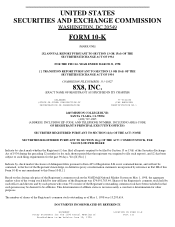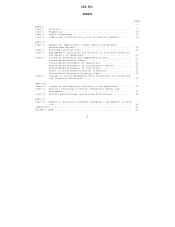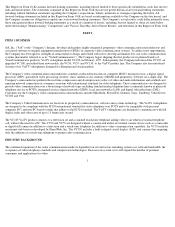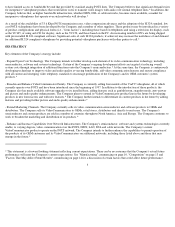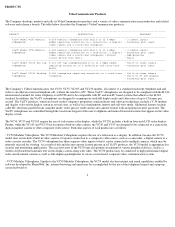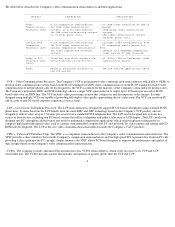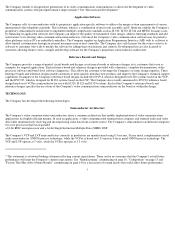8x8 1998 Annual Report Download - page 12
Download and view the complete annual report
Please find page 12 of the 1998 8x8 annual report below. You can navigate through the pages in the report by either clicking on the pages listed below, or by using the keyword search tool below to find specific information within the annual report.The Company's RISC processor core uses a proprietary instruction set specifically designed for video communication applications. The RISC
core in the VCP and LVP operates at frequencies up to 36 MHz, while the VCPex RISC core operates at 40 MHz. The RISC core controls the
overall chip operation and manages the input/output interface through a variety of specialized ports which connect the chip directly to external
host, audio and network subsystems. This core is programmable in the C programming language and allows customers to add their own
features and functionality to the device software provided by the Company. The RISC core accesses 32-bit instructions and data through a bus
that interfaces to external static random access memory (SRAM).
The Company's DSP core is a SIMD processor that implements computationally intensive video, audio and graphics processing routines as
well as certain digital communications protocols. The DSP core in the VCP and LVP operates at frequencies up to 72 MHz, while the VCPex
DSP core operates at 80 MHz. The DSP core is programmable with a proprietary instruction set consisting of variable-length 32-bit and 64-bit
microcode instructions that provide the flexibility to improve algorithm performance, enhance video and audio quality and maintain
compliance with changing digital video standards. The DSP core accesses their instructions through an internal bus that interfaces to 8
kilobytes of on-chip SRAM and 8 kilobytes of on-chip read-only memory (ROM) that is preprogrammed with video and audio processing
subroutines.
The RISC and DSP cores combine to provide an efficient and flexible architecture that can be reconfigured through a change of application
software. This flexibility allows the architecture to implement the fundamental processing steps that form the basis of H.320, H.323 and H.324
(together, H.32x) standards- based video communication systems.
The Company's semiconductors contain hardware-accelerated video pre- and post-processing capabilities that enhance video quality and
provide an interface to various video capture and display devices. These capabilities include filtering, scaling, noise reduction and interlacing.
The Company's semiconductors contain interfaces to the external devices that comprise a typical video communication system. These
interfaces include a digital video port, digital audio port, a programmable serial port (for communication via a synchronous digital interface)
and a host port (for communication with a PC or microcontroller). In addition, the semiconductors contain memory bus interfaces to external
SRAM for access to stored RISC instruction and data and to external dynamic random access memory (DRAM) for access to stored video and
graphics data.
Application Software
The Company has developed a broad range of application software that runs on the Company's semiconductor products. The Company's
application software allows the use of its semiconductors in systems that conform with various international video telephony standards. By
refining its software, the Company can enhance picture quality, address new standards and add significant user features. In addition, certain of
the Company's customers have licensed source code to which they add proprietary features, custom interfaces and, in some cases, algorithm
improvements. See "Licensing and Development Arrangements."
The Company's software can be categorized as follows:
- Control protocols that run on the RISC and manage user control, call negotiation, call progress and mixing and separation of audio, video and
other data.
- Audio and video codec routines that run on the DSP.
- Digital communication protocols that interface to external communications networks such as POTS and ISDN.
-
Development tools such as compilers, assemblers and debuggers that allow the Company and customers to write new applications and modify
existing applications.
8


